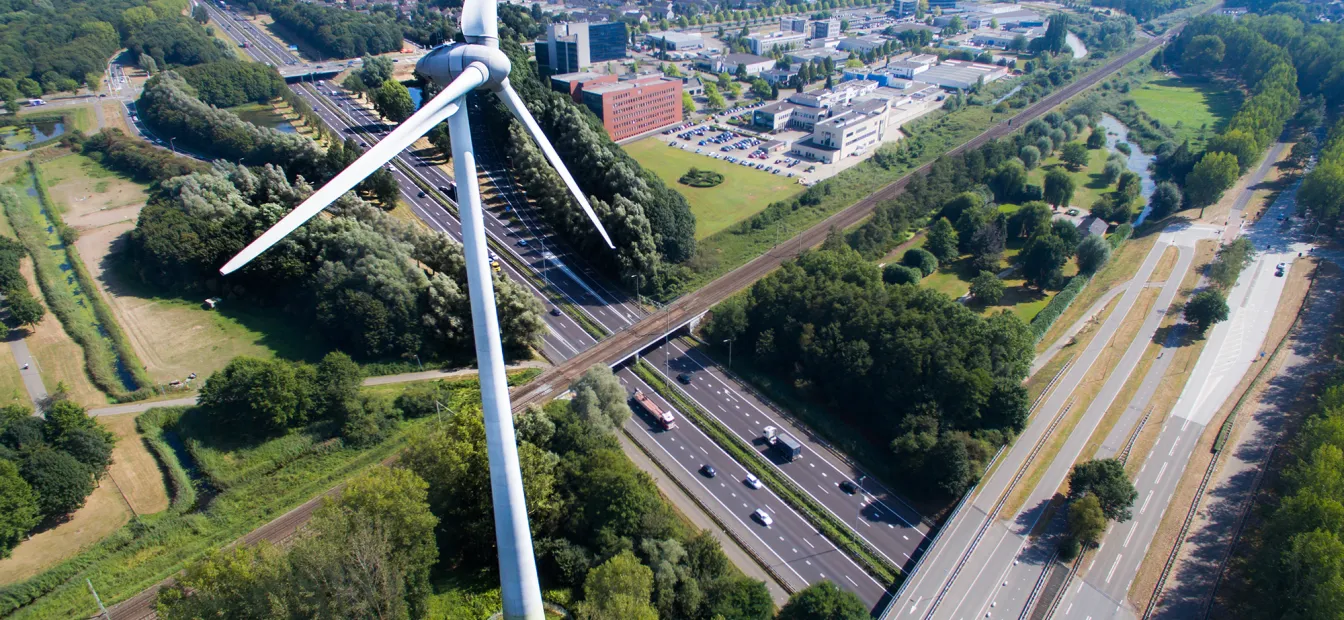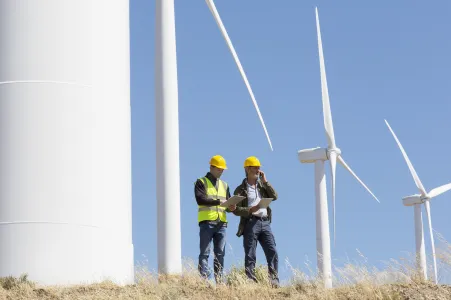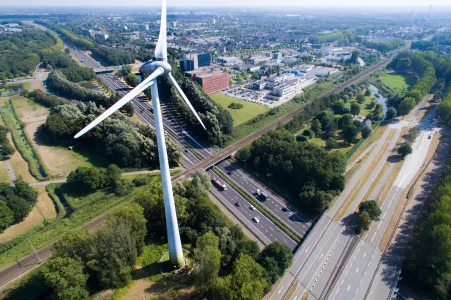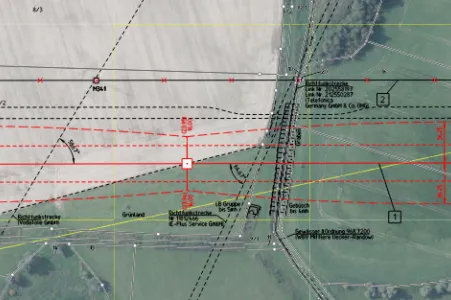
Minimise damage
Rotor blade breakage, tower failure, loss of the nacelle, rotor or other small parts - statistically speaking, these events occur about once every thousand years. However, they can cause serious damage.
The risk of component failure should therefore be taken into account for wind turbine sites that are close to busy roads such as motorways or main roads as well as highly frequented areas such as industrial estates.
During the calculation, we model the exact flight path of a rotor blade or a larger fragment, among other things. The trajectories of blade fragments hereby depend on the aerodynamic properties of the respective blade profile.

Basis
We therefore comply with IEC TS 61400-31, a technical specification (TS) that represents a preliminary stage to the standard and has been in use since November 2023. It already has sufficient content and quality and could become an international standard in 2026.

Calculation
We model the trajectory of the blade fragment. To do this, we record the aerodynamic coefficients, the geometry and the mass of the blade fragments. These are the basis on which we calculate and track the position of the blade fragment during the entire movement. This allows us to draw a realistic picture of the flight distances. Doing so, we also record trajectories in which the blade fragment reaches very high flight ranges due to aerodynamic lift forces.

Procedure
We calculate several hundred thousand trajectories with different boundary conditions. This results in the expected hit frequencies in the vicinity of the wind turbine site. Based on this, we determine the level of damage individually for each project. The risk to people is at the centre of the analysis.
We are at your side
Frequently asked questions
When should the risk of component failure be taken into account?
The risk of component failure should be taken into account in particular on busy roads such as motorways and main roads, or in areas where large numbers of people spend long periods of time, e.g. industrial estates. For smaller roads and paths, the risk of ice detachment is usually decisive. This is due to the scale of the risks. Ice fall/ice throw, for example, occurs in the order of a thousand pieces of ice per year - component failure in the order of one event in a thousand years.







